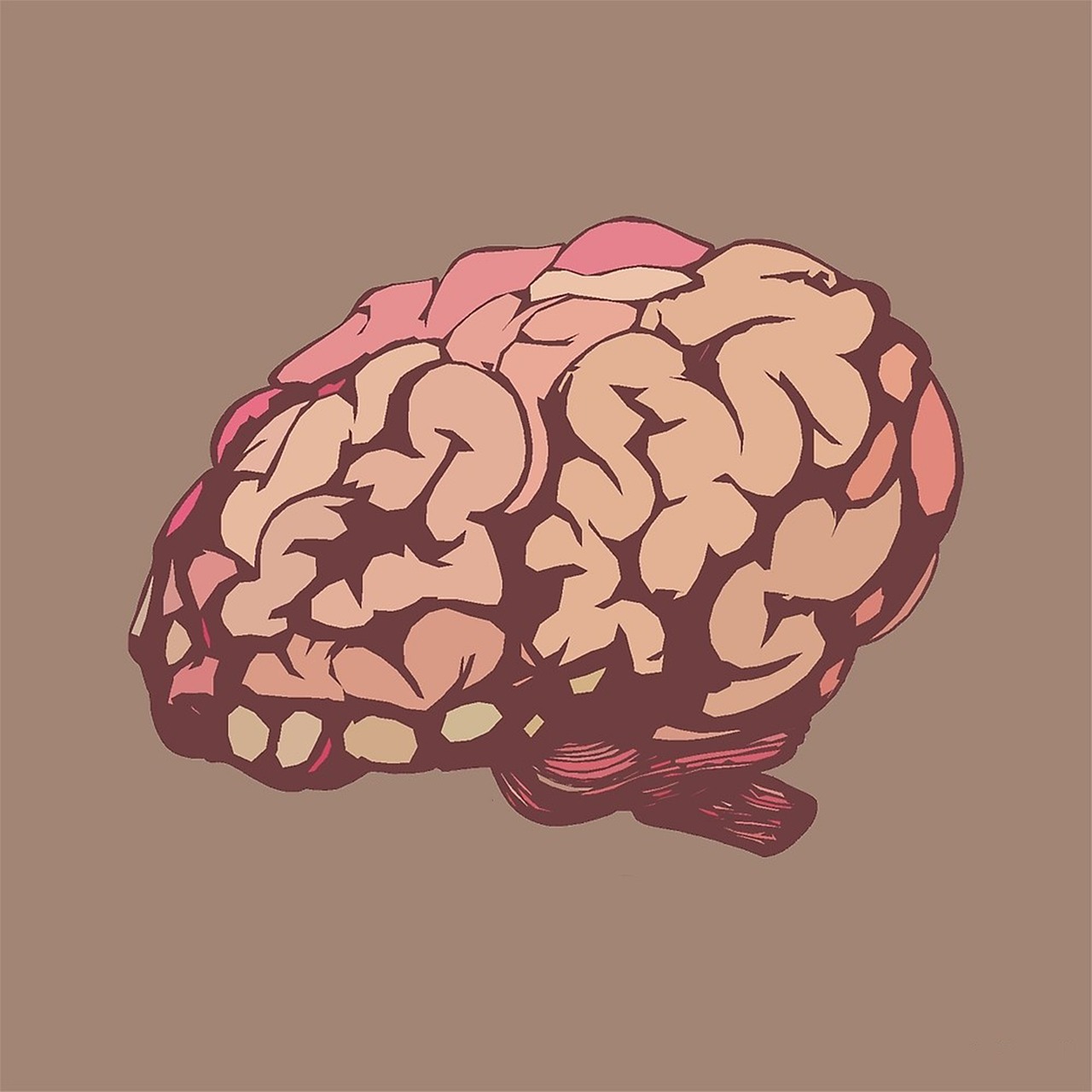John Searle's Mind-body Problem - An Evaluation
In the vast landscape of philosophy, few topics have sparked as much debate and intrigue as the mind-body problem. It’s a puzzle that has perplexed thinkers for centuries, asking the fundamental question: how do our mental states relate to our physical existence? John Searle stands out as a pivotal figure in this ongoing discussion, offering unique insights that challenge conventional wisdom. His contributions not only illuminate the complexities of consciousness but also invite us to reconsider our understanding of what it means to be human in an increasingly digital world.
At its core, the mind-body problem grapples with the relationship between the mind—our thoughts, feelings, and perceptions—and the body, the physical entity that houses these experiences. Historically, philosophers like René Descartes have posited a dualistic view, suggesting that the mind and body are fundamentally different substances. In contrast, others advocate for physicalism, asserting that everything about the mind can be explained through physical processes. Searle's approach, known as biological naturalism, offers a refreshing perspective that attempts to bridge these two worlds.
Searle argues that mental states are indeed biological processes, firmly rooted in our physical being. This position directly challenges dualism, which separates mind from body, and physicalism, which often reduces mental experiences to mere brain activity. By asserting that consciousness arises from biological functions, Searle opens the door to a more integrated understanding of human experience. Imagine trying to understand a symphony by only analyzing the individual notes; Searle reminds us that the beauty lies in the interplay of the entire orchestra, not just the isolated sounds.
His famous Chinese Room argument serves as a powerful thought experiment that critiques the notion of strong artificial intelligence (AI). In this scenario, Searle imagines a person inside a room who receives Chinese characters and, without understanding the language, manipulates them according to a set of rules to produce appropriate responses. To an outside observer, it may seem that the person understands Chinese, but in reality, they are merely following instructions without any comprehension. This analogy raises critical questions about the nature of understanding and whether machines can truly possess it.
As we delve deeper into Searle's contributions, it's essential to recognize the critiques and discussions his theories have ignited. While some argue that the Chinese Room oversimplifies the potential of AI systems to develop genuine understanding, others find Searle's distinction between information processing and real comprehension to be a crucial philosophical boundary. Supporters of his argument emphasize its importance in navigating the murky waters of AI ethics and consciousness studies.
In the realm of consciousness studies, Searle's views challenge us to consider how consciousness arises from biological processes. This perspective is not just an academic exercise; it has real implications for fields like neuroscience and cognitive science, where understanding the origins of consciousness could transform how we approach mental health, artificial intelligence, and even our own self-conception. The dialogue surrounding Searle's ideas encourages a multidisciplinary approach, urging philosophers, scientists, and technologists to collaborate in unraveling the mysteries of the mind.
As we evaluate Searle's contributions to the mind-body problem, we must also confront the critiques of his position. Critics often point out that his biological naturalism raises questions about free will and the subjective nature of consciousness. Are we merely biological machines, or do we possess a unique essence that transcends mere biology? The answers to these questions are not clear-cut, and they keep the philosophical discourse alive and vibrant.
In response to these critiques, Searle and his supporters defend the coherence of biological naturalism, arguing that understanding consciousness through a biological lens does not negate the richness of human experience. Instead, it offers a more grounded framework for exploring the complexities of the mind. As we move forward, the ongoing discourse surrounding the mind-body problem continues to evolve, inspired by Searle's work and the myriad questions it raises.
- What is the mind-body problem?
The mind-body problem is a philosophical question concerning the relationship between mental states and physical processes. - What is biological naturalism?
Biological naturalism is a theory proposed by John Searle, suggesting that mental states are biological processes. - What is the Chinese Room argument?
The Chinese Room argument is a thought experiment by Searle that challenges the idea that machines can understand language or possess consciousness. - What are the implications of Searle's theories?
Searle's theories have significant implications for understanding consciousness, artificial intelligence, and the nature of human experience.

Understanding the Mind-body Problem
The mind-body problem has intrigued philosophers for centuries, posing a fundamental question about the relationship between our mental states and the physical world. At its core, it asks: How do our thoughts, feelings, and consciousness relate to our brain and body? This dilemma isn't just a philosophical puzzle; it has profound implications for psychology, neuroscience, and even artificial intelligence. The historical context of this inquiry stretches back to ancient thinkers, but it gained significant traction during the Enlightenment when figures like René Descartes famously posited a dualistic view, suggesting that the mind and body are distinct entities. This notion has sparked countless debates and theories, leading to various perspectives that attempt to bridge the gap between the mental and the physical.
One of the key philosophical questions surrounding the mind-body problem is whether mental states can be fully explained by physical processes. Are thoughts merely the byproducts of neurological activity, or do they exist independently of the brain? This question not only challenges our understanding of consciousness but also impacts how we perceive free will, personal identity, and the nature of reality itself. Within this context, John Searle's perspective offers a fresh lens through which to examine these issues. His arguments emphasize that while mental states are indeed tied to biological processes, they cannot be reduced to mere physical phenomena.
To grasp Searle's contributions, it's essential to consider the various positions that have emerged in response to the mind-body problem. These include:
- Dualism: The belief that mind and body are fundamentally different substances.
- Physicalism: The view that everything about the mind can be explained in physical terms.
- Functionalism: The idea that mental states are defined by their functional roles rather than their internal constitution.
Searle's approach, known as biological naturalism, argues that mental states are indeed biological processes but insists that this does not equate to them being reducible to mere physical interactions. This perspective is crucial as it highlights the complexity of consciousness and the rich tapestry of experiences that define our mental lives. By situating his arguments within the broader landscape of the mind-body problem, Searle invites us to reconsider how we understand consciousness, challenging us to look beyond simplistic reductions and appreciate the intricate interplay between biology and experience.
As we delve deeper into Searle's theories, it becomes evident that his insights not only address longstanding philosophical questions but also resonate with contemporary discussions in cognitive science and neuroscience. Understanding the mind-body problem through Searle's lens encourages us to explore the nuances of consciousness, paving the way for more comprehensive research that bridges philosophy and science. Ultimately, this inquiry is not just an academic exercise; it has real-world implications for how we understand ourselves and our place in the universe.

Searle's Biological Naturalism
John Searle's concept of biological naturalism presents a fascinating perspective on the mind-body problem, asserting that mental states are not just abstract phenomena but are deeply rooted in biological processes. This viewpoint stands in stark contrast to both dualism, which posits a separation between mind and body, and physicalism, which reduces mental states solely to physical states. By arguing that consciousness is a biological function, Searle emphasizes the importance of understanding mental phenomena through the lens of biological science.
At the core of Searle's biological naturalism is the belief that consciousness arises from specific biological processes occurring in the brain. He argues that mental states, such as thoughts and feelings, are essentially higher-level biological functions. This perspective invites us to consider the brain not merely as a collection of neurons and synapses but as a complex system that interacts with the body and the environment in profound ways. For instance, just as a computer operates based on its hardware and software, our minds operate based on the biological structures and processes within our brains.
Moreover, Searle's framework challenges the idea that mental states can be fully understood without considering their biological underpinnings. He posits that mental phenomena are not just byproducts of physical processes but are integral to the functioning of biological organisms. This leads to some intriguing implications:
- Consciousness as a Biological Property: Searle suggests that consciousness should be studied as a biological property, similar to how we study other biological functions like digestion or respiration.
- Rejection of Cartesian Dualism: By framing mental states as biological, Searle effectively dismisses the dualist notion that mind and body are fundamentally different substances.
- Implications for AI: If mental states are biological, this raises questions about the potential for artificial intelligence to achieve true consciousness, as machines lack the biological processes that give rise to mental states in humans.
This biological approach not only enriches our understanding of consciousness but also aligns with ongoing advancements in neuroscience. Research in this field consistently reveals the intricate connections between brain activity and mental experiences, further supporting Searle's claims. For example, studies using functional MRI (fMRI) technology show how different areas of the brain activate during various mental tasks, indicating that our thoughts and feelings are deeply intertwined with our biological makeup.
In summary, Searle's biological naturalism offers a compelling framework for addressing the mind-body problem. By grounding mental states in biological processes, he provides a robust alternative to dualism and physicalism, inviting us to explore the rich interplay between our minds and bodies. This perspective not only deepens our understanding of consciousness but also opens new avenues for research in both philosophy and cognitive science.

The Chinese Room Argument
John Searle's Chinese Room Argument is a thought-provoking challenge to the notion of strong artificial intelligence (AI). Imagine a room where a person who doesn't speak Chinese is given a set of rules in English on how to manipulate Chinese symbols. This individual receives questions written in Chinese, follows the rules to produce appropriate Chinese responses, and sends them back out. To anyone outside the room, it appears as though this person understands Chinese. However, the reality is starkly different; they are merely manipulating symbols without any comprehension of their meaning. This thought experiment raises an essential question: does the ability to process information syntactically equate to genuine understanding?
Searle's analogy highlights a critical distinction in the field of AI and cognitive science. While computers can process information and produce outputs that seem intelligent, they lack semantic understanding. This idea challenges the assumption that machines can possess minds in the same way humans do, emphasizing that computational processes alone do not lead to consciousness or understanding. The implications of this argument ripple through various discussions in philosophy and AI, leading us to ponder deeper questions about the nature of intelligence itself.
To further illustrate the significance of the Chinese Room Argument, consider the following points:
- Distinction Between Syntax and Semantics: The argument illustrates that while computers can handle syntactic operations, they do not grasp the semantic content of the information they process.
- Human vs. Machine Understanding: It raises the question of whether machines can ever achieve true understanding or if they will always be limited to mere symbol manipulation.
- Implications for AI Development: The argument suggests that creating machines that genuinely understand language may be far more complex than simply building more advanced algorithms.
Critics of Searle argue that the Chinese Room does not account for the potential of AI systems to develop understanding over time or through complex interactions. They contend that if a system can engage in conversation and learn from experiences, it may eventually achieve a form of understanding. However, Searle maintains that no matter how sophisticated the system becomes, it will still lack the intrinsic understanding that characterizes human cognition.
In conclusion, the Chinese Room Argument serves as a crucial touchstone in the ongoing debate about the nature of consciousness and the capabilities of artificial intelligence. By emphasizing the difference between mere information processing and genuine understanding, Searle invites us to rethink our assumptions about what it means to think, understand, and be conscious. As we delve deeper into the realms of AI and cognitive science, this argument remains a vital consideration, prompting us to explore the profound mysteries of the mind.

Critiques of the Chinese Room
The Chinese Room argument has sparked a whirlwind of debate within the realms of philosophy and artificial intelligence. Critics of John Searle's thought experiment often argue that it fails to fully account for the potential of artificial intelligence systems to develop a form of understanding. They contend that while Searle's scenario illustrates a lack of genuine comprehension in the specific context of the room, it doesn't necessarily imply that AI cannot achieve understanding through more advanced means. This critique raises a fundamental question: Can machines ever truly understand, or are they merely sophisticated simulators of human cognition?
One of the primary critiques focuses on the idea that the Chinese Room is too simplistic. Critics argue that Searle's analogy relies heavily on a contrived situation where a person follows rules to manipulate symbols without any grasp of their meaning. In real-world applications, AI systems are not confined to such limitations. They can learn from experience, adapt their responses, and even develop complex models of the world around them. This leads to the assertion that understanding might emerge from these processes, challenging Searle's conclusions.
Furthermore, some suggest that Searle's argument overlooks the potential for emergent properties in complex systems. Just as human understanding is not merely a result of individual neurons firing, but rather a product of intricate interactions within the brain, it is argued that AI could similarly develop understanding through complex networks and algorithms. This perspective introduces an exciting avenue for exploring whether consciousness and understanding are merely functions of biological substrates or if they can arise from non-biological systems as well.
Another point of contention is the nature of understanding itself. Critics argue that Searle's definition of understanding is too narrow and fails to encompass the various forms it can take. For instance, the distinction between syntactic and semantic processing might not be as clear-cut as Searle suggests. Just because a machine processes information differently than a human does not mean it lacks understanding. This critique invites a broader examination of what it means to "understand" something, challenging the rigid boundaries that Searle's argument seems to impose.
Despite these critiques, supporters of the Chinese Room maintain that it serves as a crucial philosophical tool for distinguishing between mere information processing and genuine understanding. They argue that Searle's thought experiment highlights the limitations of current AI technologies and reminds us that replicating human-like behavior does not equate to replicating human-like understanding. The ongoing discourse around the Chinese Room continues to evolve, pushing philosophers and scientists alike to reconsider the very nature of consciousness and the capabilities of artificial intelligence.
- What is the Chinese Room argument? The Chinese Room argument is a thought experiment proposed by John Searle to challenge the notion that computers can possess understanding simply by manipulating symbols.
- What are the main critiques of the Chinese Room? Critics argue that the argument is too simplistic, overlooks the potential for AI to develop understanding, and imposes a narrow definition of understanding itself.
- How does the Chinese Room relate to artificial intelligence? The Chinese Room highlights the difference between syntactic processing (manipulating symbols) and semantic understanding (grasping meaning), raising questions about the capabilities of AI.
- What implications does Searle's argument have for consciousness studies? Searle's views suggest that consciousness arises from biological processes, which has significant implications for how we understand both human and artificial consciousness.

Support for the Chinese Room
Supporters of John Searle's Chinese Room argument assert that it plays a crucial role in distinguishing between mere information processing and genuine understanding. This thought experiment, which involves a person in a room following instructions to manipulate Chinese symbols without any comprehension of the language, serves as a powerful illustration of the limitations of artificial intelligence. It highlights a fundamental distinction: while machines can process data and produce outputs, they lack the ability to truly understand the meaning behind that data.
One of the key points raised by proponents of the Chinese Room is that understanding is not simply about manipulating symbols according to rules; it requires a deeper, intrinsic connection to the meanings those symbols represent. To put it simply, it's like trying to teach a parrot to speak. The parrot can mimic words flawlessly, but it does not grasp their significance. In the same vein, a computer program might convincingly simulate a conversation in Chinese, yet it remains devoid of any actual understanding of the language.
Moreover, supporters argue that the Chinese Room argument serves as a wake-up call for the field of artificial intelligence. It challenges researchers to rethink their definitions of intelligence and understanding. If a machine can produce responses that seem intelligent, does that truly equate to possessing a mind? This question is pivotal in ongoing discussions about the future of AI and its capabilities. The implications of Searle's argument resonate deeply in both philosophical and practical contexts, urging a reevaluation of what it means to "know" something.
Furthermore, the Chinese Room argument has garnered philosophical backing from various scholars who emphasize its relevance in contemporary debates surrounding consciousness and cognition. These supporters argue that Searle's insights compel us to consider the qualitative aspects of mental states that cannot be replicated by mere computational processes. In essence, they advocate for a more nuanced understanding of consciousness, one that acknowledges the subjective experience that accompanies genuine understanding.
| Key Points of Support for the Chinese Room | Explanation |
|---|---|
| Distinction Between Processing and Understanding | Machines can process information but lack true comprehension of meaning. |
| Challenges AI Definitions | Encourages a reexamination of what constitutes intelligence in machines. |
| Philosophical Relevance | Stirs debate about the nature of consciousness and subjective experience. |
In conclusion, the support for the Chinese Room argument is not merely an academic exercise; it has profound implications for our understanding of the mind, consciousness, and artificial intelligence. As technology continues to advance, the questions raised by Searle's thought experiment will remain pertinent, challenging us to explore the depths of what it means to think, understand, and be aware.
- What is the Chinese Room argument? The Chinese Room argument is a thought experiment proposed by John Searle that illustrates the difference between syntactic processing and semantic understanding in artificial intelligence.
- How does the Chinese Room challenge AI? It suggests that a machine can simulate understanding without truly comprehending the meaning of the information it processes.
- Why is understanding important in discussions about AI? Understanding distinguishes between mere data processing and genuine cognitive abilities, raising questions about the nature of intelligence.
- What are the implications of Searle's argument for consciousness studies? Searle's views suggest that consciousness arises from biological processes, inviting deeper exploration into the relationship between mind and body.

Implications for Consciousness Studies
When we dive into the depths of consciousness studies, it's impossible to overlook the profound impact of John Searle's theories. His perspective on consciousness, particularly through the lens of biological naturalism, challenges us to rethink traditional views. Instead of seeing consciousness as something ethereal or detached from the physical world, Searle argues that it is a direct product of biological processes. This idea invites us to reconsider how we approach the study of consciousness, urging researchers to focus on the intricate relationship between brain activity and mental states.
One of the most compelling implications of Searle's work is the challenge it poses to the dualistic view of mind and body. Traditionally, many philosophers have treated the mind as a separate entity from the body, leading to a myriad of questions about how these two interact. Searle's assertion that mental states are inherently biological processes shifts this paradigm. It suggests that understanding consciousness requires a more integrated approach, one that combines insights from neuroscience, biology, and philosophy.
Moreover, Searle's emphasis on the biological basis of consciousness aligns closely with contemporary research in neuroscience. For instance, studies exploring how specific brain regions correlate with certain mental states provide empirical support for Searle's claims. This intersection of philosophy and science not only enriches our understanding of consciousness but also paves the way for new methodologies in research. By grounding consciousness in biological processes, we open up avenues for empirical investigation that were previously deemed too abstract or philosophical.
To illustrate the significance of Searle's contributions, consider the following table that summarizes key aspects of his biological naturalism in relation to consciousness studies:
| Aspect | Description |
|---|---|
| Biological Basis | Consciousness is a result of biological processes in the brain. |
| Integration of Disciplines | Encourages collaboration between neuroscience, biology, and philosophy. |
| Critique of Dualism | Challenges the separation of mind and body, promoting a unified view. |
| Empirical Investigation | Supports research methodologies that focus on observable brain activity. |
Furthermore, Searle's theories have sparked significant discussions about the nature of subjective experience. His arguments suggest that understanding consciousness isn't just about identifying neural correlates but also about recognizing the qualitative aspects of experience. This opens up a fascinating dialogue between qualitative research and quantitative methodologies, pushing the boundaries of how we define consciousness.
In summary, the implications of Searle's work for consciousness studies are both profound and far-reaching. They challenge long-held assumptions, promote interdisciplinary collaboration, and encourage a more nuanced understanding of the relationship between biological processes and conscious experience. As we continue to explore the mysteries of consciousness, Searle's contributions will undoubtedly remain a cornerstone of philosophical and scientific inquiry.
- What is biological naturalism? Biological naturalism is the view that mental states are biological processes. It argues that consciousness arises from the workings of the brain, rather than being a separate entity.
- How does Searle's Chinese Room argument relate to consciousness? The Chinese Room argument illustrates that mere syntactic processing (like that done by computers) does not equate to semantic understanding, emphasizing the need for genuine consciousness in AI.
- What are the critiques of Searle's position? Critics argue that Searle's views may limit the potential for AI to develop understanding and that they may not fully address the complexities of free will and consciousness.

Critiques of Searle's Position
John Searle's contributions to the mind-body problem, particularly through his notion of biological naturalism, have sparked a plethora of debates within the philosophical community. While his arguments are compelling, they are not without their critics. One of the primary critiques revolves around the implications of his views on free will. Critics argue that if mental states are merely biological processes, this could suggest a deterministic view of human behavior. If our thoughts and decisions are entirely grounded in biological mechanisms, can we truly claim to have free will? This raises profound questions about moral responsibility and the essence of human agency.
Moreover, some philosophers contend that Searle's biological naturalism may oversimplify the intricate relationship between consciousness and the brain. They argue that consciousness cannot be fully explained through biological processes alone. For instance, the subjective experience of qualia—the individual instances of subjective, conscious experience—poses a challenge that Searle's framework struggles to address. Critics assert that while Searle emphasizes the biological basis of mental states, he does not adequately account for the rich, qualitative aspects of conscious experience that seem to transcend mere physical explanations.
Another significant critique pertains to Searle's Chinese Room argument, which suggests that syntactic processing does not equate to semantic understanding. Detractors of this argument assert that it fails to consider the potential for artificial intelligence systems to develop genuine understanding over time. They argue that just as humans learn and adapt, AI systems could potentially evolve to achieve a form of understanding that Searle's thought experiment overlooks. This critique raises an important question: could it be that understanding is not a static property, but rather a dynamic process that might be achievable by advanced AI?
Furthermore, some philosophers have pointed out that Searle's position may inadvertently lead to a form of reductionism that undermines the complexities of mental phenomena. By strictly tying mental states to biological processes, there is a risk of disregarding the social, cultural, and environmental factors that shape human consciousness. Critics argue that a more holistic approach is necessary to fully grasp the nuances of mental life. They advocate for a framework that integrates biological, psychological, and sociocultural perspectives to provide a more comprehensive understanding of consciousness.
In summary, while Searle's arguments have undeniably made significant contributions to the discourse surrounding the mind-body problem, they are not without their challenges. The critiques of his position highlight the ongoing complexities and debates within philosophy and cognitive science. These discussions serve as a reminder that the quest to understand the nature of consciousness is far from settled, and the interplay between biology, free will, and subjective experience continues to evoke rich dialogue among scholars.
- What is Searle's biological naturalism? Searle's biological naturalism posits that all mental states are biological processes, challenging dualistic perspectives that separate mind and body.
- What are the main critiques of Searle's position? Critics argue that Searle's views may imply determinism, oversimplify consciousness, overlook AI's potential for understanding, and risk reductionism.
- How does the Chinese Room argument relate to AI? The Chinese Room argument suggests that syntactic processing in AI doesn't equate to true understanding, sparking debates about the nature of consciousness and cognition.
- What are the implications of Searle's theories for free will? If mental states are purely biological, it raises questions about the existence of free will and moral responsibility in human actions.

Responses to Critiques
In the face of various critiques directed at his arguments, John Searle and his supporters have mounted a robust defense of his positions, particularly those surrounding biological naturalism. One of the most significant challenges to Searle's theories pertains to the implications for free will and the nature of consciousness. Critics often argue that if mental states are merely biological processes, this could undermine the notion of free will, suggesting that our thoughts and decisions are predetermined by physical states. However, Searle counters this notion by emphasizing that understanding consciousness as a biological phenomenon does not negate agency; rather, it reframes it within a naturalistic context.
Searle asserts that biological naturalism does not imply a reductionist view that strips away the richness of human experience. Instead, he argues that recognizing consciousness as a product of biological processes can enhance our understanding of free will. In his view, free will can coexist with a scientific understanding of the mind. He posits that while our choices are influenced by biological and environmental factors, this does not eliminate the capacity for genuine decision-making. This perspective invites a nuanced dialogue about the nature of choice and responsibility in a scientifically-informed framework.
Another critical point raised against Searle's work is the perceived inadequacy of his response to the potential for artificial intelligence to develop genuine understanding. Critics argue that advancements in AI could challenge Searle's position, suggesting that machines might eventually achieve a form of consciousness. In response, Searle maintains that while AI can simulate understanding through complex algorithms, this does not equate to actual comprehension. He reiterates the importance of semantic understanding, which he believes is fundamentally different from mere information processing. Searle's Chinese Room argument serves as a cornerstone in this discussion, illustrating that syntactic manipulation of symbols does not lead to true understanding.
To further bolster his position, Searle points to the limitations of current AI systems, which, despite their impressive capabilities, still lack the subjective experience that characterizes human consciousness. He argues that consciousness is not just about processing information but involves a rich tapestry of experiences, emotions, and awareness that machines cannot replicate. This distinction is crucial in understanding the boundaries of AI and the unique qualities of human cognition. By emphasizing the qualitative aspects of consciousness, Searle aims to clarify the misconceptions surrounding AI's potential to achieve genuine understanding.
Moreover, Searle's supporters highlight the philosophical implications of his arguments, asserting that they provide a coherent framework for addressing the mind-body problem. They argue that biological naturalism offers a middle ground between dualism and strict physicalism, allowing for a more comprehensive understanding of mental phenomena. By integrating insights from neuroscience, psychology, and philosophy, Searle's approach encourages interdisciplinary collaboration, paving the way for future research that can further explore the complexities of consciousness.
In summary, Searle's responses to critiques emphasize the compatibility of biological naturalism with concepts of free will and consciousness. His insistence on the distinction between syntactic processing and semantic understanding continues to provoke thoughtful discussion in the fields of philosophy and cognitive science. As debates evolve, Searle's work remains a vital touchstone, inviting ongoing exploration into the intricate relationship between mind and body.
- What is the mind-body problem? The mind-body problem addresses the relationship between mental states and physical processes, questioning how they interact and influence one another.
- What is biological naturalism? Biological naturalism is the view that mental states are biological processes, suggesting that consciousness arises from biological interactions.
- What is the Chinese Room argument? The Chinese Room argument is a thought experiment proposed by Searle to illustrate that syntactic processing does not equate to semantic understanding, challenging the notion of strong AI.
- How do critics respond to Searle's arguments? Critics argue that Searle's views may undermine free will and that AI could eventually achieve genuine understanding, prompting Searle to clarify his stance on these issues.
- What implications does Searle's work have for consciousness studies? Searle's work encourages a deeper exploration of how consciousness arises from biological processes, influencing ongoing debates in neuroscience and philosophy.

Future Directions in Mind-body Research
The mind-body problem has been a deeply entrenched issue in philosophy for centuries, but as we look toward the future, it's essential to consider how John Searle's insights can guide new avenues of research. One promising direction is the integration of neuroscience and philosophy. By collaborating, these fields can explore how biological processes underpin mental states, potentially leading to breakthroughs in our understanding of consciousness. Imagine a world where the intricate dance of neurons is mapped directly to our thoughts and feelings—this could revolutionize not just philosophy but also psychology and cognitive science.
Moreover, as technology advances, particularly in artificial intelligence, the implications of Searle's critiques become increasingly relevant. The development of more sophisticated AI systems raises questions about the nature of understanding and consciousness. Are these systems merely sophisticated tools, or could they evolve towards genuine understanding? Future research could focus on creating AI that mimics human-like consciousness, allowing us to test the boundaries of Searle's Chinese Room argument in real-world applications.
Another exciting area of exploration is the role of language in consciousness. Searle emphasized the importance of language in shaping our mental states. Future studies could delve into how linguistic structures influence thought processes, potentially leading to a deeper understanding of the relationship between language, thought, and reality. This could involve interdisciplinary approaches, combining linguistics, cognitive science, and philosophy to create a more holistic view of the mind.
Furthermore, the implications of Searle's biological naturalism could inspire innovative research in fields like psychology and psychiatry. By viewing mental disorders through the lens of biological processes, researchers might develop new treatment methods that target the underlying biological mechanisms rather than just the symptoms. This could lead to a paradigm shift in mental health care, emphasizing prevention and holistic treatment.
Finally, as we consider the ethical implications of consciousness studies, the future of mind-body research must also address the moral dimensions of AI and consciousness. As we create machines that can process information in increasingly human-like ways, we must grapple with questions about their rights, responsibilities, and the ethical treatment of sentient beings. This intersection of ethics, technology, and philosophy is ripe for exploration and could shape the future of both AI and our understanding of consciousness.
In conclusion, the future directions in mind-body research inspired by Searle's work are vast and varied. From interdisciplinary collaborations to ethical considerations, the ongoing dialogue surrounding the mind-body problem will undoubtedly continue to evolve. By embracing these new avenues, we can hope to unravel the complexities of consciousness and the intricate relationship between our minds and bodies.
- What is the mind-body problem?
The mind-body problem is a philosophical question concerning the relationship between mental states and physical processes. It explores how thoughts, emotions, and consciousness relate to the physical body and brain. - What is John Searle's biological naturalism?
Biological naturalism is Searle's view that mental states are biological processes. This perspective contrasts with dualism, which separates mind and body, and physicalism, which equates mental states solely with physical states. - What is the Chinese Room argument?
The Chinese Room argument is a thought experiment proposed by Searle to illustrate that syntactic processing (like that in AI) does not equate to semantic understanding. It challenges the notion that machines can truly "understand" language or concepts. - How do Searle's views impact AI development?
Searle's critiques prompt us to reconsider the nature of understanding in AI. They encourage researchers to differentiate between mere information processing and genuine comprehension, shaping the future of AI design. - What future research directions are suggested by Searle's work?
Future research may include interdisciplinary studies combining neuroscience and philosophy, exploring language's role in consciousness, and examining the ethical implications of AI and consciousness.
Frequently Asked Questions
- What is the mind-body problem?
The mind-body problem is a philosophical question that explores the relationship between mental states and physical processes. It asks how our thoughts, feelings, and consciousness relate to our physical bodies and brain functions. This issue has been debated for centuries, and John Searle's contributions have brought new insights into this complex topic.
- What is Searle's biological naturalism?
Searle's biological naturalism is the idea that mental states are biological processes. He argues that consciousness arises from the brain's biological functions, which contrasts sharply with dualism (the idea that mind and body are separate) and physicalism (the belief that everything is physical). This view helps to bridge the gap between our understanding of consciousness and the scientific study of the brain.
- What is the Chinese Room argument?
The Chinese Room argument is a thought experiment proposed by Searle to challenge the notion of strong artificial intelligence (AI). In this scenario, a person inside a room manipulates symbols based on rules without understanding their meaning, illustrating that mere syntactic processing does not equate to genuine semantic understanding. This argument raises questions about whether machines can truly "understand" language or concepts.
- What are some critiques of the Chinese Room argument?
Critics argue that the Chinese Room does not account for the potential of AI systems to develop genuine understanding over time. They suggest that if a system can process information and respond appropriately, it may eventually achieve a form of understanding. These critiques challenge the validity of Searle's argument and spark ongoing debates about the nature of AI and consciousness.
- How does Searle's work impact consciousness studies?
Searle's views significantly contribute to consciousness studies, particularly in understanding how consciousness emerges from biological processes. His arguments encourage researchers to explore the connections between neuroscience and philosophy, promoting interdisciplinary approaches to grasp the complexities of consciousness and mental phenomena.
- What are some future directions in mind-body research?
Future directions in mind-body research may include exploring the implications of biological naturalism on free will, consciousness, and artificial intelligence. Researchers are encouraged to adopt interdisciplinary methods, combining insights from philosophy, neuroscience, and cognitive science to further investigate the intricate relationship between mind and body.



















